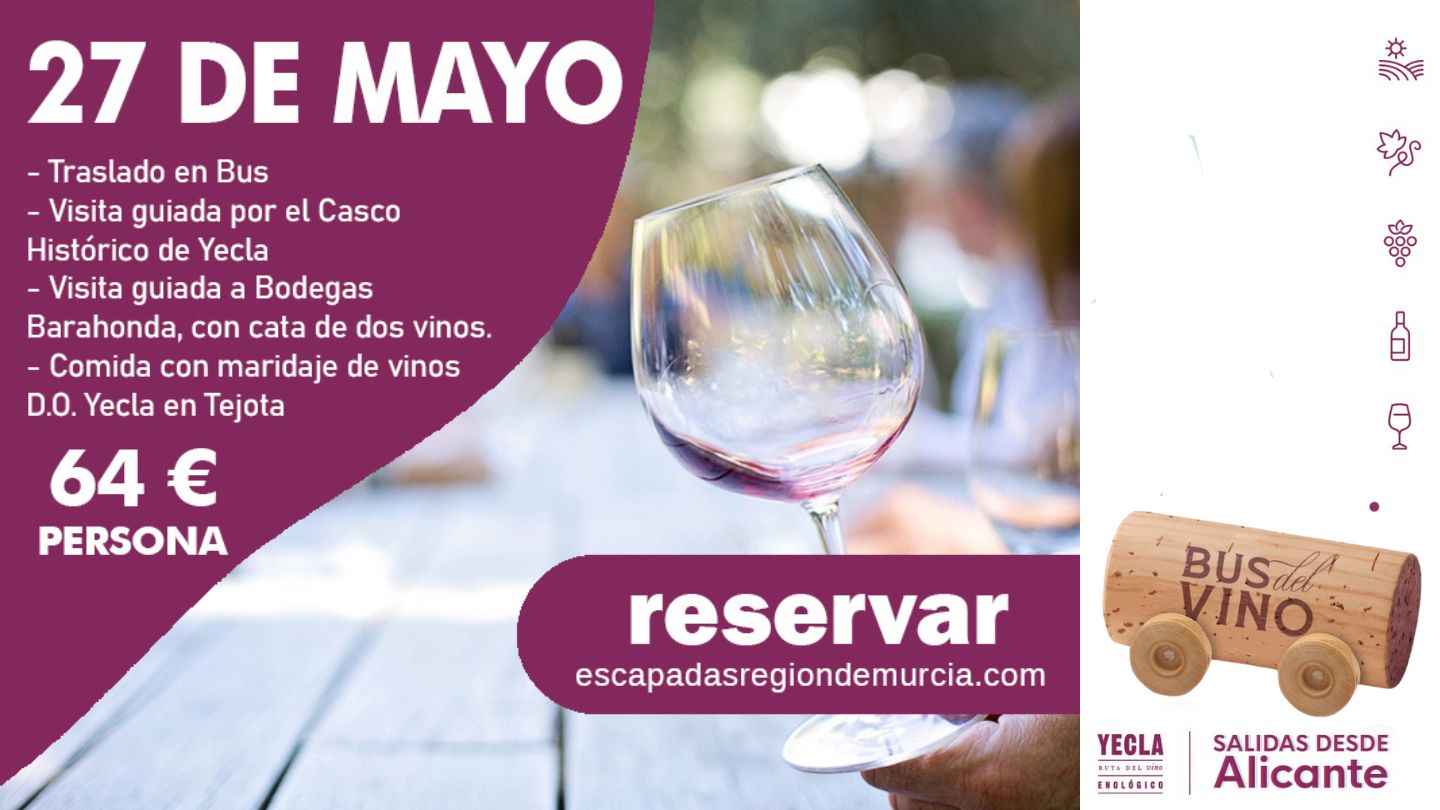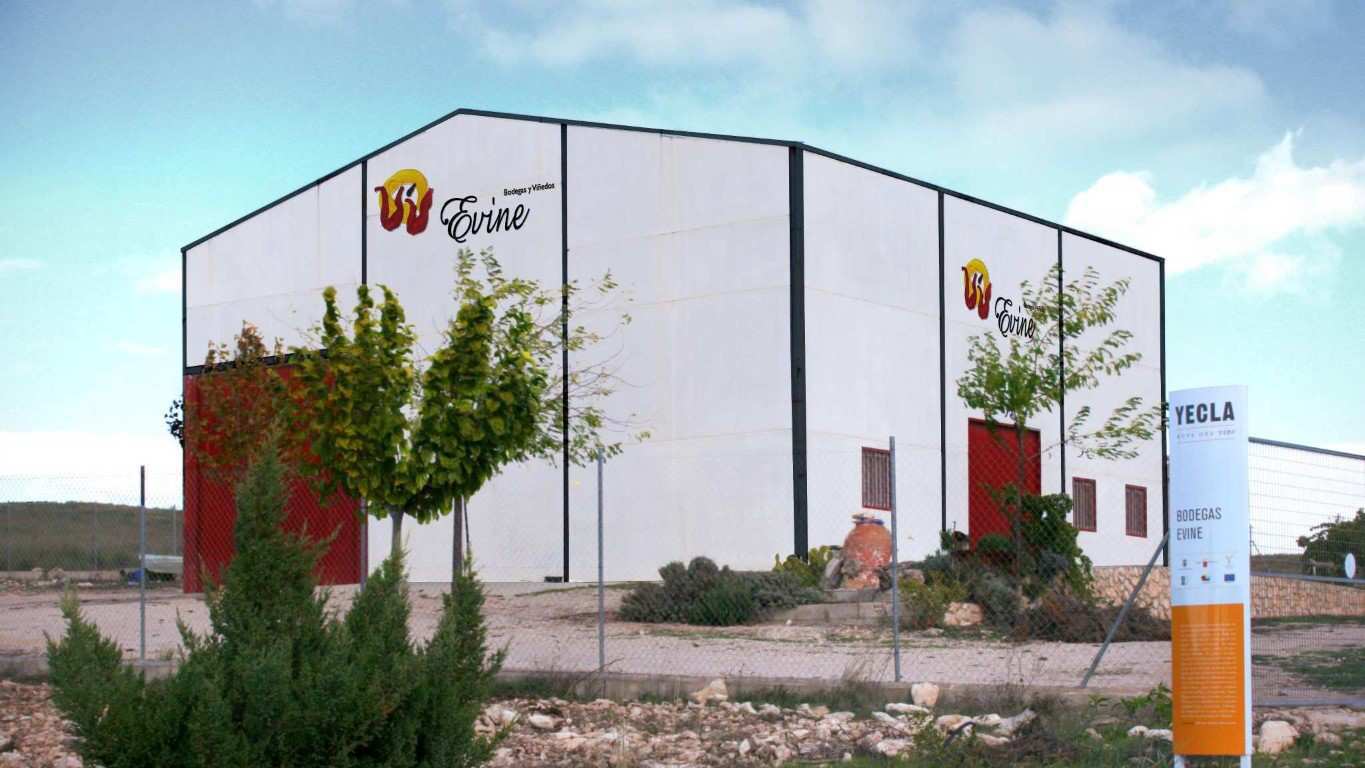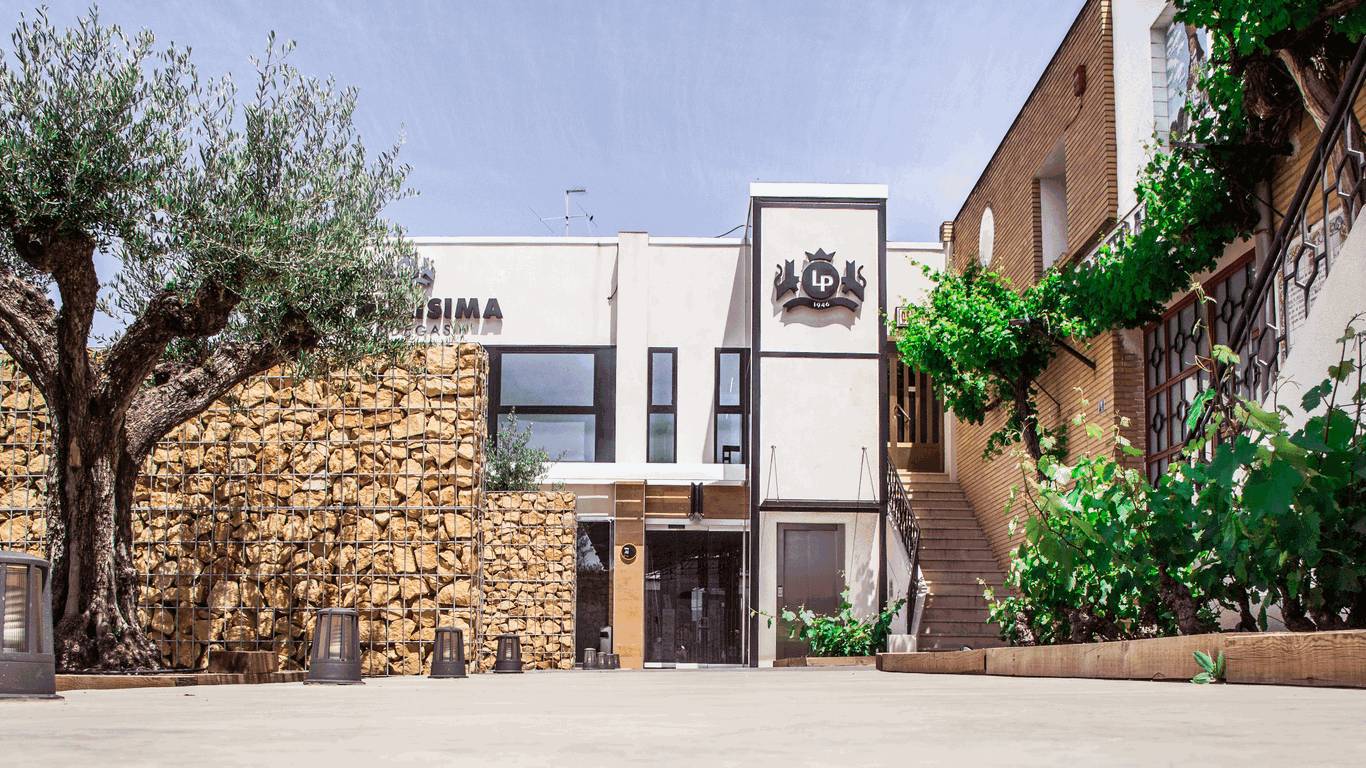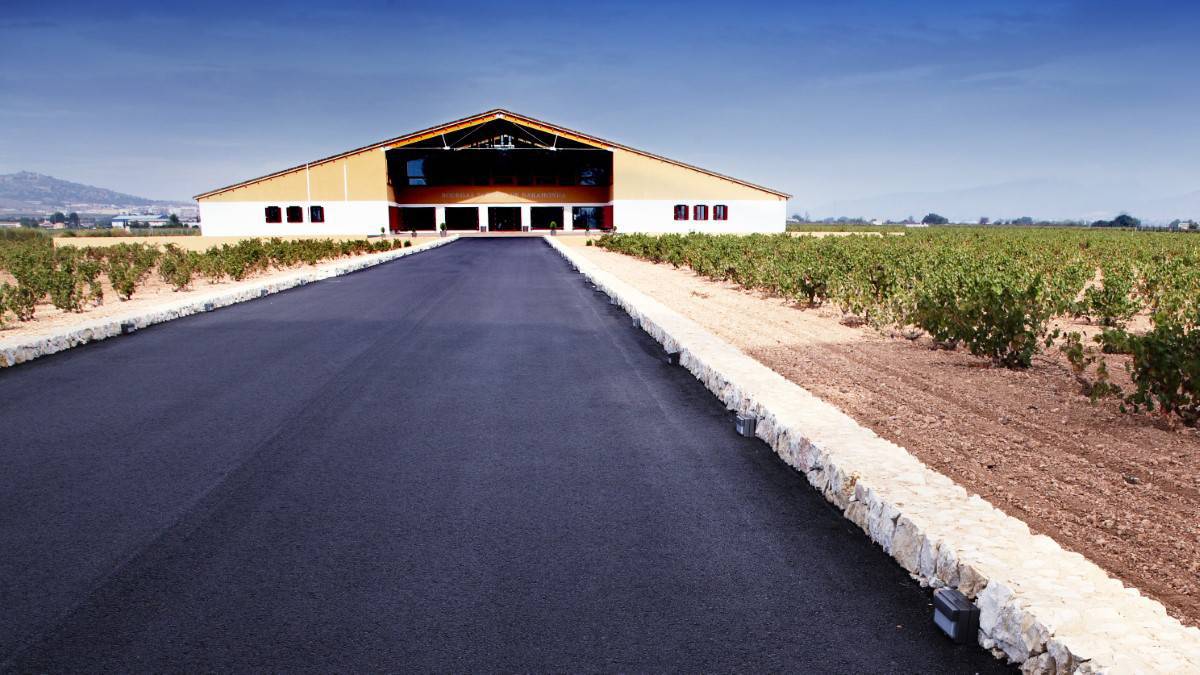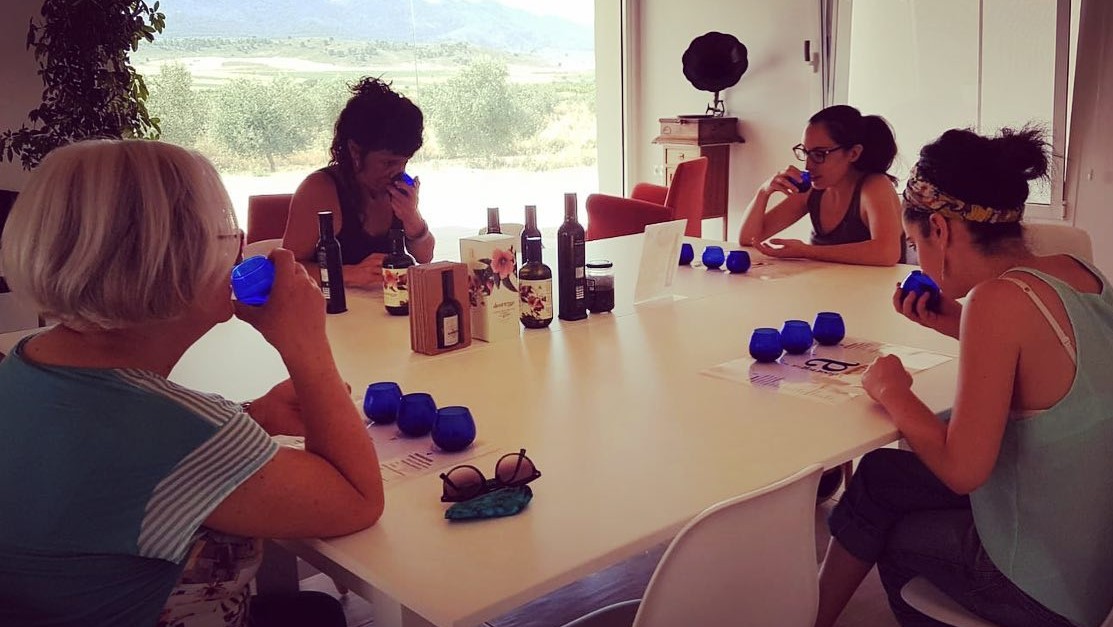The territories through which each of the current 31 Wine Routes of Spain run are as unique from the point of view of viticulture as from the natural and scenic environment. We present you some ideas to plan a different summer tour, uniting nature and wine tourism.
The winemaking tradition is the starting point and the guide of the wine tourism proposal of the Wine Routes of Spain. But not the only one. The way of understanding the tourism of the wine of this brand has to do with knowing the territory, its heritage, its customs, its gastronomy ... All of this complements the purely oenological offer, while framing and reinforcing it.
Nature, the natural spaces of each of the Wine Routes of Spain, are one of the elements that are part of the complete offer of this product club that has become the benchmark for wine tourism in our country. And summer is one of the best times to enter these spaces, most of which are little known but truly amazing and fascinating. Mountains, valleys, canyons, rivers, lagoons, coasts and beaches ... here you have 31 natural destinations to visit the Wine Routes of Spain
Benissa ecological walk . Benissa is one of the towns on the Alicante Wine Route. Along its four kilometers of coastline we can follow this low-difficulty route that leads to cliffs and small, easily accessible coves. Pines are always present, but also many other botanical species. At different points of the itinerary you will find informative panels that discover this botanical wealth, but also aspects related to geology, local culture and history. www.rutadelvinodealicante.com
La Yecla gorge . Very close to the Santo Domingo de Silos monastery, in the territory of the Arlanza Wine Route, the El Cauce stream has drilled through the centuries a narrow, deep and winding canyon, known as the La Yecla Gorge. Some metal footbridges anchored to the grayish rock walls allow you to walk through it and admire the pools and waterfalls that are hidden in this ravine. www.rutadelvinoarlanza.com
Canyons of the Duero . Arrivals, arrivals or arrivals. With these names the cannons carved by the Douro water in the granite and metamorphic rocks as they pass through the provinces of Zamora and Salamanca are known. 180 kilometers of river canyons that are one of the main natural attractions of the Arribes Wine Route, and that can be explored by boat or on foot and by car from the top of the escarpments, enjoying the spectacular views from the network of viewpoints that it marks the entire course of the river. www.rutadelvinoarribes.com
Ferreira well . The Sierra de los Ancares and its entire region is one of the corners of the Iberian Peninsula where we can have the clearest feeling of being in a place far back in time. The preservation of ancient traditions has gone hand in hand with the protection of nature. Your tour of the Bierzo Wine Tourism Route may well be completed with some of the routes through the Ancares, such as the one that leads to Pozo Ferreira, which is the name of the Cuíña peak lake, a glacial lagoon from which the Cuíña river is born, tributary of the Cúa. www.bierzoenoturismo.com
Aceniche Valley . Between Ceheguín and Bullas, on the Bullas Wine Route, this place is declared of natural landscape interest, both for its beauty and for its ecological value. Here, between the Lavia and Cambrón mountain ranges, the highest rainfall index in the Murcia region occurs, and even snowfall is frequent. Furthermore, this place is considered an ecotone, an area where two ecosystems overlap. Hence its enormous biodiversity, especially in terms of birds. www.rvbullas.es
Mirror Lake . To visit this lake with such a poetic name, you will have to visit the Calatayud Wine Route and, specifically, the Stone Monastery. Streams, waterfalls, lakes, caves and trails in the middle of an exuberant nature form the Historical Garden Park of this ancient monastery. The waters of the Mirror Lake come from four springs located three meters deep. The aquatic plants that grow in it give it greater transparency, so it is easy to guess the reason for its name ... www.rutadelvinocalatayud.com
The Ribera del Huerva trail . In the Cariñena region where the Campo de Cariñena Wine Route runs, three types of landscapes follow one another: the plain, the mountains and the banks of the Huerva river, which they call feminine here and write with 'b': “La Huerba " Throughout this territory you will find different trails, some designed to be done by bike and others on foot, in which striking wild areas of great geological interest alternate with others more humanized, studded with orchards, cultivated fields and reservoirs. But in many sections, the Huerva and its banks are feral, transporting the walker to other times of greater connection with nature. www.rutadelvinocampodecarinena.com
Cortados del Pisuerga . In a corner of the Cigales Wine Route, the paramo and the cereal fields seem to rise towards the sky as one proceeds along the path that, little by little, becomes whiter, due to the composition of the terrain, formed by plasters. and calcareous materials. And, suddenly, the ground disappears ... At our feet there is only a huge earthy wall that flanks the course of a river. These are the Cortados del Pisuerga, a geological spot, traveled along a path from which you can see a spectacular panorama and from where you can see the most evocative sunsets in the province of Valladolid. www.rutadelvinocigales.com
Grenache territory . This is the name that the Garnacha-Campo de Borja Wine Route has given to a network of trails designed for BTT tours throughout this region of smooth plains between the Ebro valley and the foothills of the Iberian System and the Moncayo. There are routes for all audiences, some more focused on professionals and others, easier, designed for families; some more sporty and others designed following the landscape interest. www.larutadelagarnacha.es
Sierra de Santa Ana . In the territory of the Jumilla Wine Route you will find various enclaves of mountainous geography. One of them, the Sierra de Santa Ana, very close to Jumilla, can be discovered by following forest tracks and a short path that extends throughout it. It houses an extensive forest mass of Aleppo pine, in addition to different unique trees. Along with the botanical species, the observation of fauna (especially birds of prey) is one of its most attractive claims. www.rutadelvinojumilla.com
Lagoons of Alcázar de San Juan . In the middle of the La Mancha Wine Route you can plan some really surprising routes, such as visiting a lagoon system that is part of the so-called 'Wet Mancha', the set of wetlands, rivers and lagoons of this great region cataloged as a Biosphere Reserve. The three large lagoons of Alcázar de San Juan are different from each other, one more stable and others of a seasonal nature, which makes them gather a great diversity of birds, some of them difficult to spot elsewhere. www.rutadelvinodelamancha.com
Hoz del Júcar . The territory through which the La Manchuela Wine Route extends is framed between two rivers, the Cabriel and the Júcar. The sickles that the latter forms, both in the province of Albacete and in that of Cuenca, are as unknown as they are spectacular. In Alarcón, one of the towns on the route, you can take a hiking tour choosing an itinerary by the river, following meanders sandwiched between limestone cliffs, or something else wider that combines the upper part of the canyons with the paths that they go down to the water. www.rutadelvinolamanchuela.com
Sierra de San Gervás . In reality, this natural space of enormous landscape and geological interest is made up of three different territories but united by the same mountain system. You will find it north of Montsec, in the territory of the Lleida-Costers del Segre Wine Route. Some vineyards grow here at almost 1,200 meters of altitude, in front of these pre-Pyrenean mountains included in the Natura 2000 Network. They have a good number of trails and mountain circuits, but you have to be well informed, as many are of high difficulty, not suitable for all kinds of public. www.rutadelvidelleida.cat
Rota Beaches . Within the Marco de Jerez Wine and Brandy Route you will find coastal towns such as Rota, which offers 16 kilometers of high-quality, fine white sand beaches. Part of these beaches are integrated into the Almadraba Natural Park, a natural space of dunes and pine forests planted at the beginning of the 20th century to maintain this coastal dune system and prevent them from advancing towards farmland. This area is covered by a network of wooden walkways, with viewpoints, access to the beaches and a visitor center where the cultural and environmental value of this environment is explained. www.rutadeljerezybrandy.es
Lagoons of the South of Córdoba . In the Cordovan countryside, next to the landscape of vineyards and olive groves where the Montilla-Moriles Wine Route runs, you will also find seasonal lagoons converted into Nature Reserves for their special values as wintering places and nesting for migratory birds. Some of these lagoons are the Zoñar (the deepest in Andalusia and considered the 'kingdom' of the Malvasía duck), the Rincon, the Tíscar, the Amarga (named for its high concentration of magnesium sulfate), the de los Jarales or Donadío. www.turismoyvino.es
Bardenas Reales . Different protection figures (Natural Park, Biosphere Reserve, ZEPA ...) protect one of the most unique territories and landscapes of the Iberian Peninsula: the Bardenas Reales, a group of steppes, bad lands and sedimentary rocks subjected to millennia of erosion and wear. The landscape appeal is exceptional, but also many others related to the geological past, biodiversity and man's relationship with the environment. To know them you must visit the Navarra Wine Route. www.rutadelvinodenavarra.com
Beaches in the Penedès . Mountains, forests and beaches ... in addition to vineyards, of course. On the Penedès Wine Route you can find this powerful variety of natural spaces and, among all, we offer you those that have to do with the coast and the sea. The beaches are part of the Penedès landscape and you have 35 kilometers of coastline to choose from, either in the Garraf region or in the Baix Penedès region; central, hidden, large sandy areas or small coves at the foot of cliffs. www.enoturismepenedes.cat
Island and Tower of San Sadurniño . The Rías Baixas Wine Route is another of the territories where you can practice wine tourism by the sea. In Cambados, we suggest you visit the fishing neighborhood of Santo Tomé, from which a bridge that spans the Arousa estuary to the island of A Figueira or the island of San Sadurniño. That is the name of the tower (already in ruins) that was built in the Middle Ages and that served to warn the population of Viking raids. The island even has a small beach where, perhaps, you can spread your towel ... www.rutadelvinoriasbaixas.com
Singular trees . In the extensive territory that the Ribera del Duero Wine Route occupies, in addition to remarkable vineyards you will find unique trees that, from this route, they propose to know to admire them and raise awareness of the importance of our botanical heritage. They already have 20 cataloged, with all the information on the species, the specimen in particular, the location and its relationship with the inhabitants of the area. Of course, if you prefer to see birds, you can go to the Hoces del Río Riaza Natural Park, considered the largest refuge for birds of prey in Europe, with which the route also collaborates. www.rutadelvinoriberadelduero.es
Sierra Grande de Hornachos . The great birds of prey are also the stars of one of the most outstanding natural enclaves in the territory of the Ribera del Guadiana Wine Route: the Sierra Grande de Hornachos. The set of rocky mountain ranges that compose it stand out on the wide plains of Tierra de Barros, and are presented as a redoubt of the original Mediterranean forest, with scrub and meadows of holm oaks and cork oaks. You can visit it through different self-guided itineraries (to be done on foot or by bike), in addition to planning specialized birdwatching outings. www.rutadelvinoriberadelguadiana.com
Sierra de Toloño . The Sierra de Cantabria or Sierra de Toloño, which goes by both names, is the backdrop to the territory of the Rioja Alavesa Wine Route, so our proposal is to get to know it closely. And for this, there is nothing better than taking one of the hiking trails in the area, such as the one that leaves Kripán and goes to the Alto del Avellanal, surrounding a rocky mass that stands out among the beech forests, called Montorte. Walking along the crest of the mountains we will reach the rock hermitage of San Tirso. www.rutadelvinoderiojaalavesa.com
Wine trails . The proposals for hiking routes through the territory of the Rioja Alta Wine Route are grouped under the name of Wine Trails. With these tours you can discover natural spaces that go from the banks of rivers such as the Ebro, the Oja and the Tirón, to forests and mountain areas when you follow some of those that enter the Sierra de Cantabria area. www.rutasdelvinorioja.com
Leza river canyon. One of the most outstanding natural spaces in the territory of the Rioja Oriental Wine Route is the Valles de Leza Biosphere Reserve,
Jubera, Cidacos and Alhama . Among the different proposals in the area, we suggest you visit the Leza River Canyon, a spectacular landscape of large limestone cliffs, through which there is a natural path where you will find information on the geological formation, fauna and flora of this surroundings, in addition to a viewpoint from which you will have some of the best views. At some points of the itinerary you can also go down to the river. www.rutadelvinoriojaoriental.com
The Tajo de Ronda . If we expand the best-known image of Ronda, the Tagus, we will see that at the foot of the rock walls on which the city sits there are vineyards. It is a perfect picture to start discovering the Ronda and Malaga Wine Route. But now we will focus on that Tajo de Ronda, a gorge 500 meters long and 100 meters deep, 50 meters wide and a huge escarpment that opens into a circular hollow known as 'La Caldera'. The Guadalevín River, which falls through a 35-meter waterfall, is the creator of this natural spectacle. www.ruta-vinos-ronda.com
Riberas de Castronuño . On its way through Castronuño, in the province of Valladolid, the Duero forms the largest meander of its course. Its banks have a rich biodiversity and are the breeding ground and refuge of a wide variety of species, some of them threatened, such as the imperial heron or the marsh harrier. For all these reasons, the Riberas de Castronuño are declared a Nature Reserve. The visit to this corner of the Rueda Wine Route can be done by following a cycle route or a footpath that runs through the characteristic landscapes of the reserve: reed beds, riverside forests, oak groves and cultivated fields. www.rutadelvinoderueda.com
Path of the Prodigies . This is the name of one of the Art in Nature Paths that you can follow in the territory of the Sierra de Francia Wine Route, in the heart of the Batuecas-Sierra de Francia Natural Park, in the province of Salamanca. It is a circular path that joins the municipalities of Miranda del Castañar and Villanueva del Conde, which runs between oak groves, vineyards, olive groves and cork oak and strawberry trees, and crosses bridges and small waterways. The artistic interventions that you will find along the route allow a new reading of that landscape. www.rutadelvinosierradefrancia.com
Vero River . The Sierra de Guara, in the Huesca pre-Pyrenees and in the territory of the Somontano Wine Route, is one of the most indicated places to practice active tourism in ravines and canyons, but it also hides other corners to carry out other more relaxed activities, with the same spectacular natural setting. In a section of the river Vero sickle you can do what they call 'water hiking' here, which consists of walking along the stream, which is calm and shallow, and cooling off in the badines that form along its route. www.rutadelvinosomontano.com
Paseo del Espolón . This is an urban space to admire a natural space. The Paseo del Espolón, in Toro, runs, along ramps and some flights of stairs, the slope on which the city of Zamora, the center of the Toro Wine Route, sits. It is a huge viewpoint from which to enjoy great views of the whole fertile plain and the Douro River, crossed here by the Puente de Toro or Puente Romano, one of the oldest built along its channel. Orchards, cultivated fields, riverside forests and, in the background, the hills where the vineyards are guessed. www.rutavinotoro.com
Cabriel River . Among the places of greatest scenic and natural interest that you can find in the territory of the Utiel Requena Wine Route are the Hoces del Cabriel. This fluvial enclave, bordering La Manchuela, is listed as a Natural Reserve and, recently, in 2019, it was declared a Biosphere Reserve. Among all its attractions, the geomorphological formations such as Los Cuchillos de Contreras, Las Hoces and the gullies of the Fonseca Valley stand out. www.rutavino.com
El Peral Natural Area . The Peral stream gives life to an extensive area of abundant vegetation, located about seven kilometers from the center of Valdepeñas. The vineyard landscape of the Valdepeñas Wine Route changes here for riverside trees and a prairie area. The existence of medicinal mineral water springs led to the creation of a spa, or bathhouse, at the end of the 19th century, which has now been restored and turned into an interpretation center where aspects related to the natural environment are explained, the water cycle and the wetlands of the region. www.rutadelvinovaldepenas.com
Mount Arabí . This mountain that stands out in the middle of a plain, in the territory of the Yecla Wine Route, is most unique: its environment has great biodiversity and, in addition, it is an outstanding geological and archaeological enclave. Erosive phenomena have given rise to curious formations such as huge rounded stone blocks, caves, shelters and walls with a hollow surface. It is a place with many legends and mysteries, which is why it is considered a 'magic mountain'. www.rutadelvinoyecla.com




